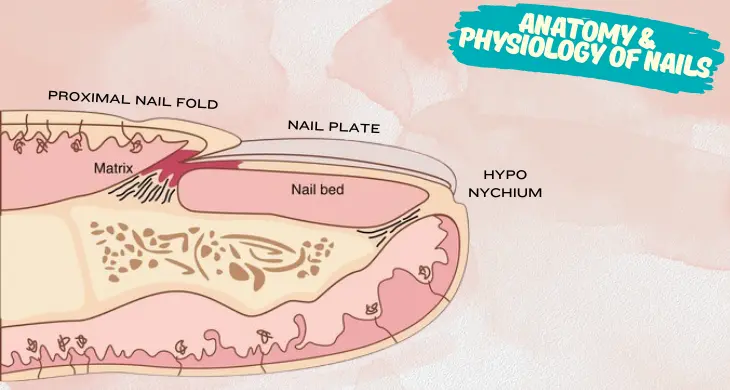Introduction to Nail Anatomy
Nails, those small yet significant parts of our body, serve multiple functions beyond aesthetics. Their role in protection, sensation, and support cannot be understated. As we delve into the intricate world of nail anatomy, we uncover the layers and processes that contribute to their strength, growth, and overall health.
Understanding the Significance of Nail Anatomy
Nails, seemingly small and often overlooked, hold a significant role that extends far beyond mere aesthetics. As we embark on a journey into the world of nail anatomy, we uncover the depth and importance of these seemingly unassuming structures.
The Complexity Beneath the Surface:Beneath the glossy surface of our nails lies a complex architecture of various components, each with its own role and purpose. From the nail plate to the matrix, the nail bed to the cuticle, every element plays an integral part in the health, growth, and functionality of our nails.
Protection and Functionality: Beyond their visual appeal, nails are designed to provide protection and support to our fingertips. The nail plate, composed of keratinized cells, acts as a barrier that shields the sensitive underlying structures from potential harm. This protective function allows us to engage in various activities without risking damage to our fingertips.
The nail is a complex structure that consists of several layers, each playing a specific role. Let’s explore the different parts of a nail:
Nail plate: It is composed of keratin-rich cells, is the visible portion of your nail that provides protection and strength to your fingertips. It shields the delicate tissues underneath and undergoes constant growth, ensuring your nails remain resilient. Proper care, hygiene, and moisturization are essential for maintaining the health and appearance of this vital nail component.
Nail Bed: It is a crucial part of your nails. It houses blood vessels and nerves, providing essential nutrients for nail growth. The pinkish hue is due to the underlying blood vessels, which contribute to nail health. Taking care of your nail bed by practicing good hygiene and moisturization supports healthy nail growth and appearance.
Lunula: It is often referred to as the “moon of the nail,” is the pale, crescent-shaped area at the base of your nail. It’s a visible part of the nail matrix, responsible for producing new nail cells. The lunula’s appearance varies, and it’s often more visible on the thumbs. While the exact role of the lunula isn’t fully understood, it’s a fascinating and distinctive feature of your nails.
Cuticle: A thin layer of skin at the base of your nails, plays a vital role in nail health. While it’s natural to want to push back or trim the cuticles, it’s essential to avoid overdoing it, as this can lead to damage and infections. Gentle cuticle care, including moisturization and avoiding harsh practices, helps maintain the integrity of your nails and promotes their well-being.
Nail Matrix: It is often referred to as the “root” of your nail, is the tissue beneath the base of your nail. It’s responsible for producing new nail cells, which then harden and form the visible nail plate. The health of the nail matrix greatly influences the quality and growth of your nails. Any damage to the matrix can affect the appearance and texture of your nails as they grow out. Taking care of your nail matrix through proper nutrition, hydration, and gentle nail practices is essential for maintaining strong and beautiful nails.
Nail Folds: Nail folds, also known as perionychium, refer to the skin surrounding the base and sides of the fingernails and toenails. They play a crucial role in protecting the nail matrix and the delicate tissue underneath the nails. Nail folds are composed of both the cuticle (eponychium) and the lateral nail folds.
Nail root: It is also called the nail matrix, is the hidden area just beneath the base of a fingernail or toenail. It’s located beneath the cuticle and is responsible for producing new nail cells. These cells multiply, harden, and form the visible nail plate. The health of the nail root directly affects nail growth and appearance. It plays a vital role in generating the protein keratin, which gives nails their strength. Injuries to the nail root can lead to irregular nail growth or temporary loss, but if the matrix remains intact, nails can regrow over time.
Hyponychium: It is the area of skin located beneath the free edge of a fingernail or toenail. It’s the space where the nail separates from the fingertip or toe. The hyponychium acts as a protective barrier, preventing dirt and debris from getting under the nail and potentially causing infections. It also provides support to the nail and helps maintain its position on the fingertip. This thin layer of skin is an essential part of the overall nail structure, contributing to both nail health and protection.
Nail Growth Process:
- Cell Production: New nail cells are produced by the nail matrix. As these cells divide and move forward, they harden and flatten, forming the nail plate.
- Keratinization: The nail cells undergo keratinization, a process in which they fill with keratin, a tough protein. This gives the nail its strength and rigidity.
- Nail Plate Formation: As the nail cells continue to grow and keratinize, they become tightly compacted and form the visible nail plate.
Nail Physiology:
- Blood Supply: Blood vessels in the nail bed provide nutrients and oxygen to the growing nail cells, supporting their development.
- Sensation: Nails have a rich nerve supply, particularly in the nail bed. This sensitivity serves as a protective mechanism, alerting us to potential injuries.
- Nail Growth Rate: Nails generally grow at an average rate of about 3 millimeters per month. Factors such as age, genetics, health, and external influences can impact the growth rate.
Nail Health and Maintenance:
- Hygiene: Keeping nails clean and properly trimmed helps prevent dirt and bacteria from accumulating and causing infections.
- Moisture: Adequate moisture helps prevent dry, brittle nails. Applying nail-specific moisturizers or creams can help maintain nail health.
- Protection: Avoiding excessive moisture exposure (which can lead to splitting) and protecting nails from trauma are essential for their well-being.
- Balanced Diet: Nutrient intake, particularly vitamins and minerals like biotin, zinc, and iron, can influence nail strength and growth.
- Professional Care: Regular visits to nail care professionals for manicures or pedicures can contribute to overall nail health.
Understanding the anatomy of nails can be beneficial for maintaining their health and preventing common problems such as infections, ingrown nails, or brittle nails. Regular nail care, including proper hygiene and moisturization, can help keep your nails strong and beautiful.

